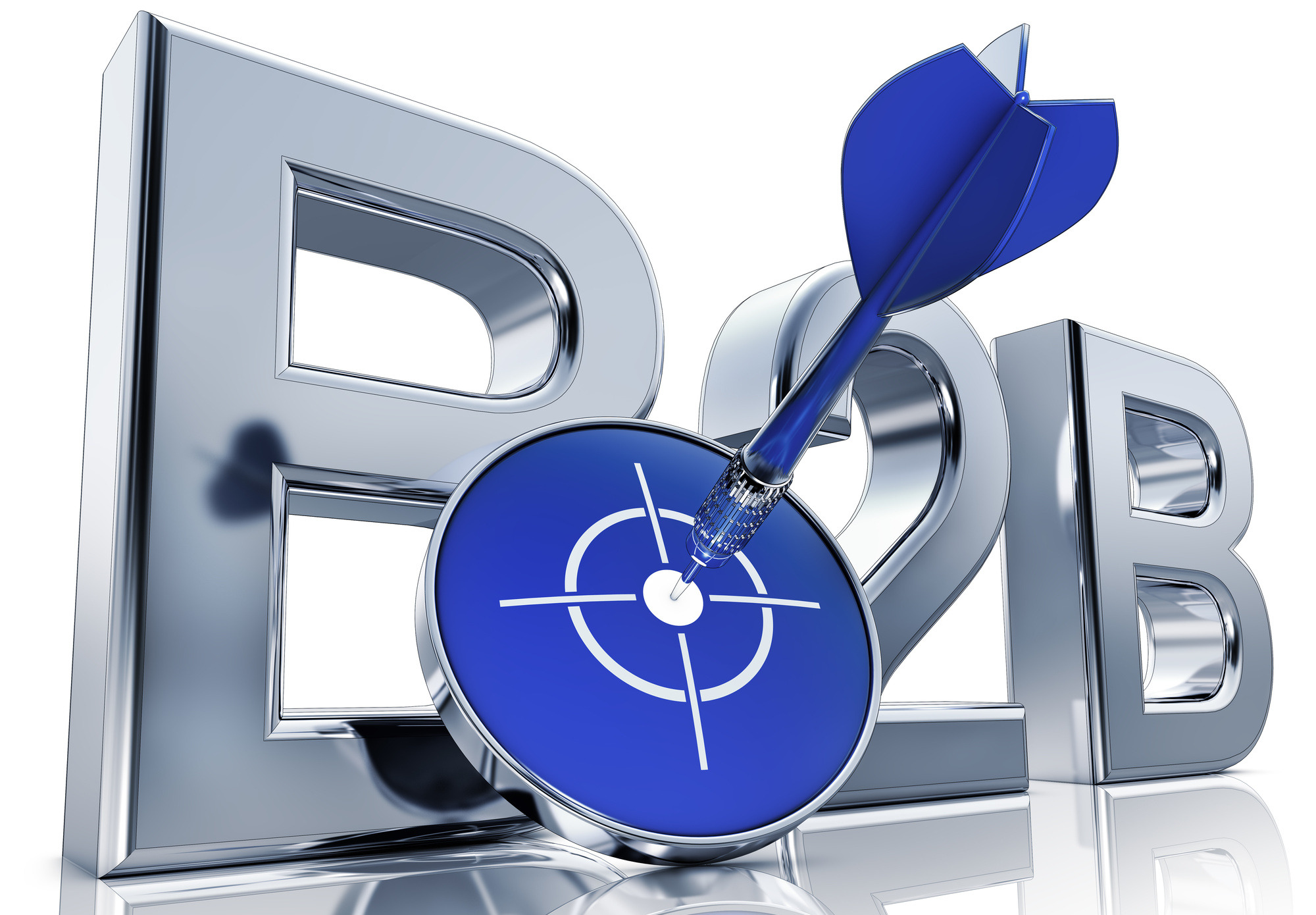A Guide to B2B Content Marketing
From independent entrepreneurs to sales managers, your B2B consumers see an average of over 5000 ads a day. Typical marketing channels can often...


Year after year, B2B marketers regularly cite lead generation as one of their top priorities, and platforms like HubSpot have dedicated countless resources to the subject. To us, that isn't surprising—in B2B, lead generation is the hallmark of a successful marketing strategy and the best way to get new customers.
Whether you’re new to marketing and need to know the basics of a good B2B lead generation strategy, or you’re a seasoned marketing manager wanting to revisit this tried and true formula, you’ve come to the right place.
 is a strategy commonly used by companies that provide products or services to other organizations. The strategy is designed to attract leads and generate prospects in any number of industries, from HVAC and construction to automotive and media broadcasting. Even more, it's a critical strategy for businesses in the digital age, as more and more of the purchasing and decision-making power shifts into the hands of the buyer.
is a strategy commonly used by companies that provide products or services to other organizations. The strategy is designed to attract leads and generate prospects in any number of industries, from HVAC and construction to automotive and media broadcasting. Even more, it's a critical strategy for businesses in the digital age, as more and more of the purchasing and decision-making power shifts into the hands of the buyer.
One of the biggest distinctions B2B lead generation strategies offer is the ability to attract higher-quality leads that are more likely to close for higher revenue. It also allows B2B companies to obtain business through channels other than referrals, allowing them to diversify even further on who they can serve.
B2B businesses provide products and services that help other businesses run and thrive. They could sell to businesses that engage with consumers directly (B2C), or work with other B2B businesses. In both cases, they support the other businesses to provide products and services that they can’t supply directly, which keeps all three businesses and—on a macro scale—the economy running.
What differentiates B2B companies from the typical business-to-consumer (B2C) business that people think of is that they almost never interact directly with public-facing consumers. Where B2C businesses like retailers, restaurants, hospitals, and auto repair shops interact with individual consumers on a daily basis, B2B companies interact almost exclusively with other businesses and are seldom public-facing.
Across all industries, B2B companies tend to fall into four different categories depending on what they offer. To examine what these categories do in real-life, we’re going to use an example almost nobody thinks about often: how toilet paper is made.
The B2B companies that supply raw materials for products are usually where the journey starts, regardless of which industry is directly involved. Rarely will consumers directly interact with these companies or the raw materials they're supplying, but product suppliers depend upon them. If we're using our toilet paper analogy, these are the businesses that harvest trees, bamboo, and wood pulp to the companies that produce the product for general consumption.
Any product that other businesses or consumers use starts with these B2B companies supplying raw materials. They don't make the product itself, but it can't be made without them.
As anyone who's been to a supermarket knows, any consumer products they take home come from these B2B companies. Revisiting our toilet paper analogy, these are the companies that use the raw materials and actually make the toilet paper rolls, package them and get them ready to be sold in supermarkets and other stores. Just as without these producers we wouldn't have any kind of product at home, we wouldn't have toilet paper without these companies either.
In the B2B space, the services are the connective tissue that keeps everything running. B2B services can include everything from specialty cleaning crews to delivery and logistics drivers, and virtually any other work that's done in between to keep the product moving between Points A and B. Naturally, this covers a lot of different roles and positions, and can even include consultative services, safety training companies, or marketing agencies like ours.
Going back to our process of making toilet paper, the B2B services would include the trucking companies that deliver the packages of toilet paper, negotiate with supermarket chains to get them on the shelves, and the workplace safety training company that teaches the toilet paper producers how to do their jobs safely so nobody gets hurt making toilet paper.
Frequently known as Software as a Service (SaaS), these B2B companies help all of the other categories in each industry work more efficiently. They include everything from boutique PO systems that are used to keep production moving on the factory floor to communications services like Microsoft Teams and Slack or email providers like MailChimp or Constant Contact.
In our toilet paper analogy, the SaaS category comes into play at multiple points in the process. When the toilet paper production company needs more materials to be provided, they use software to communicate what they need from the raw materials provider and how much through electronic purchase orders. The production company then uses its software to keep track of how production is coming on the factory floor and, if needed, identify any issues that should be fixed. Then, the services company uses software to help the raw materials and production companies track where their orders are when they're in transit.
Almost all businesses work with another B2B business in some capacity, but that's just a bird's eye view of what that process looks like to get that single roll of toilet paper into your bathroom at home.
No matter which media and methods you use to attract more B2B leads, and regardless of the industry you’re targeting, one of the first steps in developing your B2B marketing strategy is to offer ways for your leads multiple different ways to get the information they need and contact you when they’re ready.
Build these throughlines for connecting with your company with the following B2B sales funnel stages in mind:
At this point in the B2B sales cycle, your leads might not even technically be leads yet. They might even just be visiting your website or looking at other resources on their own, and they might not even know about your company. What they do know at this point is that they have a problem, and they need to find a new way to solve it.
This is where your lead is starting to think about all of their options—whether they can resolve their problems on their own, or need to pull in outside resources to fix them. It’s at this point that they might start looking at you or your competitors to see who might have the best solutions for them.
The lead might also begin asking questions at this stage, though that doesn’t necessarily mean they’re ready for the sales pitch yet. Be prepared to answer their questions and act as a trusted advisor.
It’s at this point that your B2B lead is choosing between multiple different solutions. They might be comparing you with your direct competitor and a few other options, or they might be deciding between working with you or tabling the issue for later. No matter what the case may be, now is your sales team’s time to pitch the products or services that work best for your prospect.
After the lead has made their decision to go with you or another solution, you’ll have a chance to learn more about why they said yes or declined your offer—regardless of what the answer was, learn why they responded the way they did so you can use that knowledge for your own reference.
The right B2B lead generation strategy can look different for almost every company. Regardless of whether you're using mostly inbound marketing, mostly outbound marketing, or a combination of both, there are certain strategies for generating leads that are tried, true, and known to work.
If there's anything we've learned over our decades of experience, it's that marketing trends are temporary but email is forever. It's not the sexiest way to market to potential leads in a world where Google+, Facebook, Instagram, and TikTok exist, but it's already outlasted at least two of those platforms and will be here long after the rest are gone.
Getting your leads to opt-in to receive emails from you is the first step in the lead generation process. With that, email marketing is still the backbone of engaging with your leads during every stage of their buyer's journey and beyond.
To ensure this strategy works, learn how to write useful and engaging emails that attract prospects.
Despite what we just said about social media above, it's also still an important part of any B2B marketer's arsenal, partly because it's less expensive than traditional advertising platforms and allows you to reach a very targeted audience. However, there's a caveat with this: Advertising B2B on social media doesn't work the same as advertising B2C.
Typically, B2B businesses can find LinkedIn Ads as their most reliable resource when they're trying to engage with decision-makers at other businesses. While it's not the only platform you should consider, especially if you work with B2C companies, in particular, it's still a juggernaut for lead generation because it reaches other professionals where it counts.
There's a reason why we love webinars so much--they're great for generating high-quality leads. If someone is willing to trade their email address, name, and potentially some other pieces of contact information in exchange for what you have to say, there's a good chance they're more prepared to talk to your sales team than other types of leads.
Another option for generating leads comes with attending or hosting live events. Trade shows are great for this--they allow you to introduce yourself to potential buyers and connections that are unique to your industry. Take a stack of your business cards and potentially a sample of your product if it's applicable because trade shows can be a great way to establish rapport with your leads in person.
We mentioned earlier that your leads will try to look for answers and solutions on their own long before your sales team ever knows they exist. Blogging is the reason why, and it's also what can bring them to you once they're ready to talk.
Blogging serves multiple purposes in the context of B2B lead generation. One of the main purposes is allowing your leads to find you through the use of keywords and keyword phrases. That way, if they're looking up potential solutions to their problem of not being able to deliver 500 master cartons of toilet paper within five days by themselves, they can search for information on that and find answers through your blog. Adding new posts with relevant material on a regular basis also shows users and search engines alike that your information is relevant and updated.
Blog posts are also an excellent tool for your sales team to generate leads through outreach, answer questions or overcome objections. They give the salesperson an easy resource to provide with relevant information that your prospects can use as they're making decisions.
Having a high-performing website that's designed to generate leads is one of the most critical pieces in your strategy. In a world where cold calls are becoming less and less effective, it's a must-have. It's even more essential if you want to set up an inbound lead generation model for your B2B company since that model literally cannot function without a website. Your website should be able to attract prospects and drive them through your sales funnel at every stage of the buyer's journey.
Every part of your website should work toward getting your visitors to convert in a way that's seamless, unobtrusive and that gives them agency as buyers. Include forms and information they'll find valuable on every page of your site--because they're not always going to come to your homepage and read your website like a book. This could include pop-up forms or downloadable content they can consume at their own pace. Even if they just want to sign up for your newsletter, your website needs to be designed to make that an easy process for them, because that's how they'll turn into leads and, hopefully, your customers.
B2B lead generation isn't just effective; it's essential for businesses to thrive and continue to grow and maintain their presence in the market. While implementing this strategy in a way that is sustainable and impactful for your business can take time and resources, the ROI practically speaks for itself and allows your sales team to work on closing sales more effectively.
To learn more about this strategy and how to make it work, get in touch with us and benefit from our quality inbound marketing and sales enablement services.

From independent entrepreneurs to sales managers, your B2B consumers see an average of over 5000 ads a day. Typical marketing channels can often...

There are some key components of marketing that fit together to create a solid B2B marketing campaign plan that drives results and delivers desired...

Lead generation is the process of attracting and converting potential prospects into leads that are interested in what your company has to offer....